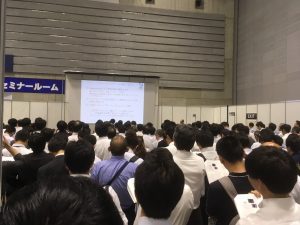What we want to tell you at the end of the seminar
The last one at the seminar on the 14th is the one I most want to tell you about.
I added it because I thought it would be a rare opportunity to have the time of perhaps 300-400 people involved in the field of manufacturing.
Being involved in this work, I have the opportunity to see defective products from a variety of industries.
Of course, there are some major defects that interfere with functionality, but the majority of them seem to have no functional problems. It could be a minor black spot, or a minor flaw that can only be seen from a certain angle. They are considered defective because they look a little bad.
In order to control such defective products, we devote a large number of man-hours to quality control.
In the pyramid structure of manufacturing, the lower one goes, the stronger the desire to avoid claims becomes. This is further reinforced by the disposition of the Japanese people.
I believe that most people on the production floor are aware that something is wrong with this situation, which could be considered an excessive quality-first attitude. However, the quality system is so firmly established that no one can say anything about loosening it. It is no longer a problem that can be solved by a single person.
Therefore, I would very much like to propose a review of the inspection standards for all concerned.
I feel that if the designers of the upper pyramid could provide guidelines as to whether the defective product is functionally defective, the situation would change considerably.
Can't even the designers say let's loosen up? If so, I think that if you actually do inspection work on the production site for even one day, you can create inspection standards from the designer's point of view.
If "use what you can use," the number of items that can be shipped will increase, and the man-hours required for inspection will also decrease. Fewer defective products being discarded will also be more environmentally friendly.
And I hope that we will no longer have to send one production engineering manager into a reckless battle to "automate this" while maintaining the same high inspection standards as before.


